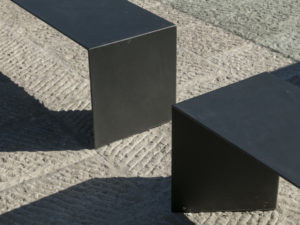Project Description
The building was designed as a response to the wishes of the Sancaklar family who wanted to build a mosque on a site overlooking the Buyukcekmece Lake, in a neighborhood of many gated communities. The main issue was a confrontation with the classical Ottoman mosque scheme, which became a sheer anachronism with regard to today’s construction techniques.
Given that a mosque does not have a predefined form and anywhere clean may be a prayer room, the project focused solely on the “essence” of a religious space, by distancing itself from discussions about form. Physical and emotional well-being was at the forefront. The design aimed to represent the purest forms of light and matter, like a primary inner world, free from all cultural burdens. The building merged into the slope of the site, anchored to the ground as if it had always been there, with the aim of avoiding all temporal and cultural ties.
The project site is located in a grassland landscape that is separated from the surrounding suburban gated communities by a busy street. The only visible elements of the mosque are the courtyard surrounded by horizontal walls and a vertical prismatic mass of stone (minaret), which indicates that this is a “place”, and the inscription denotes that this is a place of prayer. The cascades following the natural slope turn into steps as one moves through the landscape, down the hill and leading to the entrance in the lower courtyard. The tea house, a public space and the library enhance the communal aspect of this open space. The directly accessible prayer hall, a simple and cave-like space, is a dramatic and awe-inspiring place to pray and be alone with God. The interior is simple, with materials presenting themselves as they are, free of any superfluity. The walls and the ceiling reinforce the sense of purification and humbleness. The space may be defined as a meditation space. The only ornament is the daylight that leaks onto the Qiblah wall, changing according to the time of the day. The slits and fractures along this wall enhance the directionality of the prayer space. The letter “waw” on the reflective black wall of infinity is a special feature. For the first time in mosque architecture, women have the opportunity to pray in the same row as the men, instead of being at the back as customary, in an elevated and separate part of the hall. The complex includes the ablution halls, restrooms and the imam’s house, with direct access to the hall.
The building completely blends into the topography and thereby peacefully reflects the form of the ground. This submerging effect and the green roof above provide natural insulation against heat loss and gain. The landscaping consists mainly of rural plants that need no maintenance and that merge with the surrounding grassy plain. All these features make the building energy-efficient and save the use of water.




















































































